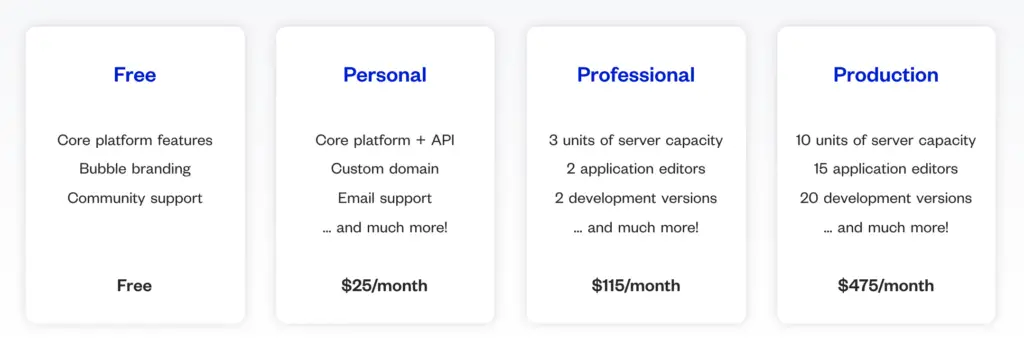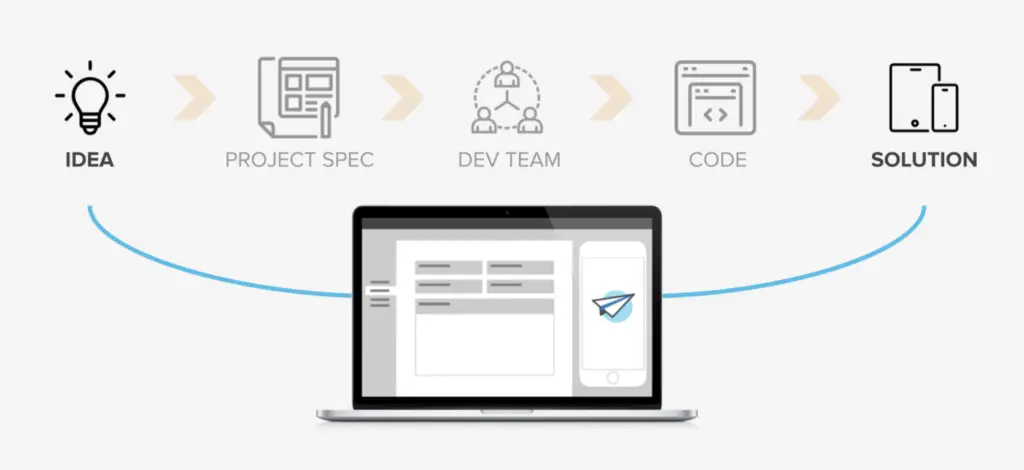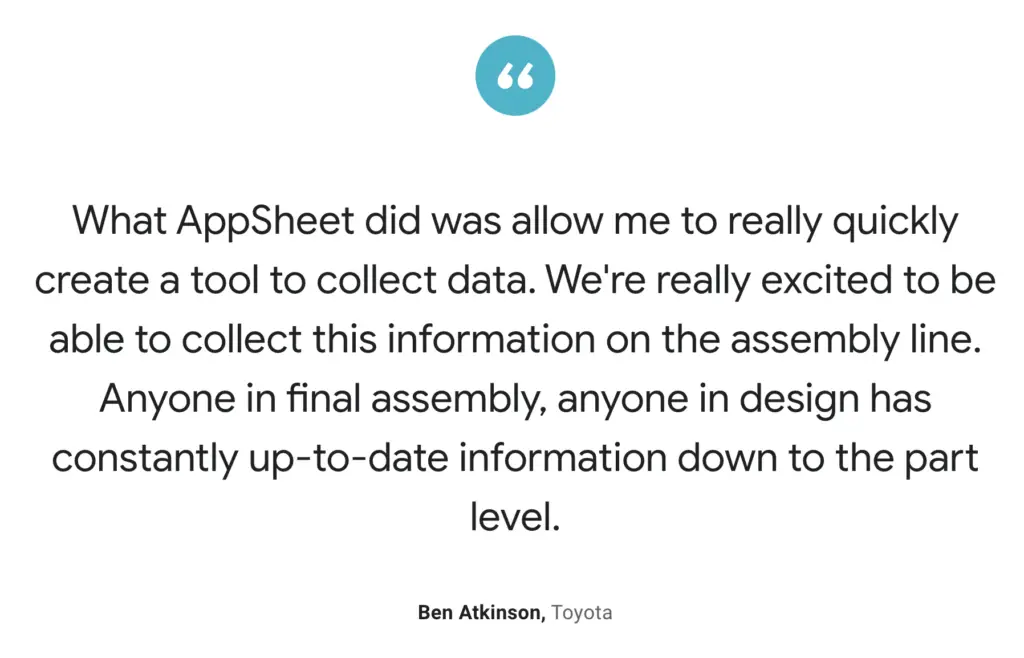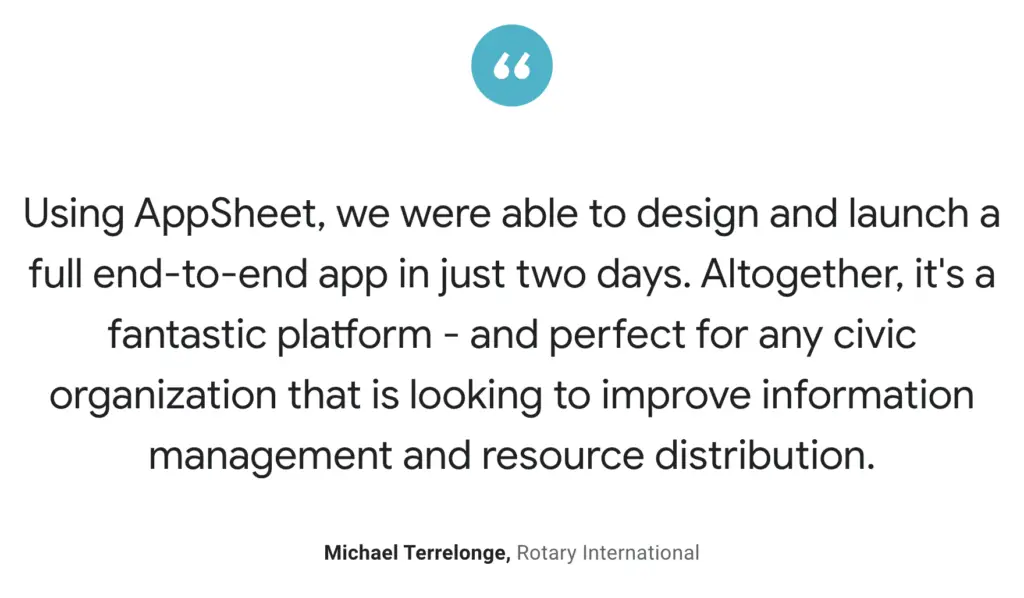What is low-Code Software?
When deciding on the approach to agile software development, there are a number of options to take into account especially when dealing with low code software. We are entering an age where less pressure will rest on the shoulders of your IT department to reinvent the wheel and they won’t even need to know what is low code software!
While this may seem like a scary proposition, to lock yourself into a platform that seemingly doesn’t offer you the flexibility to create something truly unique, the truth is that low-code platforms offer a lot of flexibility and opportunities for input and variation.
To make sure you have all of the information you need when selecting whether or not to use a low-code platform, we will show you what low code is, what problems low-code solves, and the work environment and limitations.

What is a low code platform?
A low-code platform is an easy and fast alternative to more traditional software development approaches. It includes a family of tools that will take you from end to end on the development and deployment of applications using a visual interface.
Most of the time, it’s drag-and-drop, and sometimes even node-based, which allows you to program in actions and functions using flow charts and other diagrams.
Through utilizing a user interface, it appeals and caters to not only developers but also citizen non-developers who are interested in creating either an MVP or a fully developed and deployed application.
Low-code does allow for minimal hand-coding if it is desired, though the underlying functionality of the application is dependent upon the infrastructure that is laid down underneath the user interface.
Low code is a trending topic and you can check out some low code statistics here.
A typical low-code development environment consists of these characteristics:
- Drag and drop interfaces allow for easy development processes.
- A visual modelling tool that allows you to create the UIs, data models, and functionality with the option to add in hand-written code when needed.
- Connectors that handle the data structures, retrieval, and storage.
- Out of the box functionality allows you to skip having to build your core modules from scratch, and instead focus on building new code.
- Automated application lifecycle manager that allows for building, deploying, debugging, and the staging and production process. Testing is possible here as well.
While low-code software generally follow these guidelines, no two low-code software are alike, and they are all designed to cater to specific functionality.
What is open source low-code?
Open source low code uses the same foundational principles but you can add a community and software that is free and available to download. There are lots of benefits to use open source but there are also some problems.
You can review our article here specifically for open source low code.
Additionally, if you are wondering what is no-code software, then you should know that it is software specifically designed for business owners and citizen developers who do not have a background in coding at all.
What problem does Low-Code Software solve?
Low-code platforms have a selection of benefits, especially for smaller businesses or startups. Large companies have the benefit of large and well-qualified IT departments, but what about the smaller and newer developers?
Rapid innovation and increased agility that allow for a shorter iteration and timeline between customer feedback and new deployments are one of the key benefits of low-code and no-code software.
Keeping your business limber throughout the lifecycle of your application is integral to maintaining a satisfied customer base, and ensuring loyalty to your brand.
A dramatic reduction in the complexity of the development process allows current developers the ability to create and maintain applications that are optimally satisfying while at the same time being able to adapt and deploy solutions with newer technologies.
Software building best practices becomes a cinch through the reusability of the tools, and adjustments are able to meet a fluid environment.
If you have dedicated developers, they are able to accomplish more within a short amount of time.
If you have a team that is low on development skills, they are able to still produce, maintain, and deploy applications to the market without having to wait until they are able to hire or retain talent to create a building from scratch.

What is Low Code like to Work With?
Working with a low-code developer environment isn’t much different than working within any other framework that isn’t using binary.
If you are using modern programming languages, then you are already working within an environment that has already been prebuilt.
The main difference is that you aren’t forced to spend precious time recreating the absolute basic infrastructure that is needed to get the lower level functionality before you start writing your proprietary code and applications.
For instance, a user management system is an integral part of the development process, but is it really necessary to hard code it?
Especially taking into account the time it takes to learn the idiosyncrasies of your programming framework of choice?
Generally speaking, these have been coded so many times that we are all familiar with how to solve these problems and understand how they work. The time it would take to recreate this code is time that could be better spent creating new code that sets your application apart from the rest.
During the normal application development process, you generally follow the following 16 steps:
- Identify the requirements
- Design the architecture
- Pick the framework that will make up the backend
- Pick the framework that will make up the front end
- Select the development stack, set up CI, and make the operations plan
- Wireframing and prototyping
- Select the chosen JavaScript framework, and hand-code in the UI
- Write 10 or more failing tests
- Characterize the models and hook them to data stores.
- Characterize and code business logic.
- Make views to send and receive JSON data.
- Add workflows and UI.
- Assimilate 3rd party APIs using published interfaces and libraries.
- Repeat to pass all the tests
- Rounds of testing for performance, user experience, security and performance.
- Deploy, monitor, patch, upgrade, and update until the end of the life cycle.
But What About the Low Code Process?
The development process in a low-code environment is much more streamlined and easier to maintain than in the traditional environment:
1. Make your determination of requirements
2. Choose third party APIs
3. Use the visual IDE to draw the workflows, data models, and UIs
4. Use automatic capability discovery to connect APIs
5. Add any necessary front end code or customize the SQL queries
6. User acceptance testing
7. Deploy the application and push updates easily
The Limitations of Low Code
Even though the low-code development market is growing 50% year over year according to Forrester Research, there are some drawbacks that occur that you should consider when deciding upon a low-code solution.
One of the biggest limitations comes in the tradeoff between agility and customization.
Customization is something that varies from solution to solution, so make sure you research your possible development environment in advance.
Adjacent to the limitation of customization, is the limitation to evolve your application over time.
This is a rather large limitation as Moore’s Law is in constant effect, and a solution will need the agility to completely evolve year over year to keep up with the wants and needs of the consumers.
The truth is, that even if you go the low-code route, it should be a part of a larger development strategy that does incorporate code.
Even if you include low-code, you should still have the ability to automate a number of processes that are essential for an agile development environment.
Such as debugging and dependency impact analysis. Being able to package your entire application for the app stores in as few steps as possible, one click if necessary, and continuously keep up to date on possible changes that are occurring in sentiment, the market, and in your ability to deliver an optimal solution to customers.
Benefits of Companies Using Low Code Software
There are many benefits to using low-code software in addition to those mentioned above. They include a plethora of reasons to consider low-code software, as well as ways to make sure your solution will add value to your application in those ways.
Here are the benefits for companies who choose the low code route
- FAST TIME TO VALUE
In today’s market, you have to be able to get up and running and user testing faster than ever. Not only do you need that initial deployment to be quick, but all iterations as you move forward.
You also have to make sure that retesting and integration of data happens constantly throughout the evolution of your application. Not only are you more agile throughout the development and deployment process, you also enjoy a faster route to market and a faster timeline to realizing value.
Another thing that can be a death knell to your company is having such a server backlog that users resort to Shadow IT practices to get their needs met. Having a faster deployment and iteration process allows you to keep up with consumer demands and stay ahead of the competition.
This value addition also allows for organizations that might not have a large bankroll before they can start seeing financial results to get out there with users and start generating support and a following.
2. EASY INTEGRATIONS
If you are worried that you won’t be able to integrate using drag and drop software, think again. Low-code platforms often offer the ability to integrate with existing systems and APIs, oftentimes allowing you to get up and running within 30 minutes or less.
Most low-code platforms understand how integral it is to power the next generation of apps, and the infrastructure is put in place, so you don’t have to spend hours setting up a well-worn framework for API integration.
3. GREAT UX BY DEFAULT
When designing your application, you need to have the invisible computer. Everything needs to be intuitive and seamless in order to keep users satisfied.
While this may seem like a tall order for a developer, the truth is that a lot of low-code solutions have pre-built UI patterns, and screen templates that allow you to work with predefined layouts, components, styles, widgets, and logic. These editors use the WYSIWYG (What You See Is What You Get) development editors.
4. MODERN ARCHITECTURES
Modern architectures want the speed of getting their products out to market faster than competitors. Creating reusable architecture is a way to ensure that creating a solution is akin to playing with building blocks.
This can accelerate application development as you don’t have to code things twice when you can plug and play pre-built modules.
You also don’t have to edit and debug the code in multiple places as the code has been centralized in one location, consolidating the time it takes to fix and patch.
It also makes things simpler with different developers working on the same application as each doesn’t have to code the same thing and can instead take the blocks that have already been built. All dependencies automatically refresh upon update. This allows you to design for reusability, if that is truly right for your application.
5. BULLETPROOF SECURITY
Low-code platforms keep security at the forefront of their design process. They are able to consider all avenues of protection including application protection, data protection, policies and procedures, application protection, and infrastructure protection.
This covers web and mobile apps as well as CRM and ERP systems. Additionally, built-in security controls are able to automatically mitigate risks that derive from common vulnerabilities such as SQL injection or cross-site scripting (XSS). Vulnerability can open up with the addition of custom code, so that it must always be considered carefully prior to its addition.
Here Are Some Ways to Know If Your Low-Code Solution is Secure:
- ✓ Platform security audits and compliance
- ✓ Single sign on and authentication
- ✓ Platform access control
- ✓ Application access control and audits
- ✓ Secure code using plugins
- ✓ Secure API endpoints
If your low-code solution provider offers these solutions, then you know you have an arsenal at the ready against Shadow IT or any other threat.
Examples of platforms that integrate and support low-code software
When developing your software solution, you want to make sure that your low-code software integrates with the most robust and widely available platform hubs. Platform hubs are the major players that act as the backbone of the Web 2.0 world we are living in. They hold the nervous system, but they also house information and processes. A few of these staple platform hubs are:
Formerly known as Office 365, Microsoft365 encompasses access to Microsoft Office tools for home, school or office. It operates as a productivity cloud that allows you to share your documents and even collaborate with others.
This platform hub works across multiple devices, allowing for organization among other things, while also being fully committed to accessibility. It allows for the creation of premium creative content, and offers ongoing technical support.
2. Google’s G-Suite (Now Google Workspace)
Possibly one of the most widely used web-based applications that exist, the Google G-Suite offers a lot of the same functionality of Microsoft365, but being entirely web based.
Touted as bringing together essential services to help your business, and offering a variety of services including email, Google Drive, Google Docs, Calendar, Google Talk, collaborative documents, presentations and sites, surveys, and really any tool your business could need to be productive in a collaborative and cloud-based environment while offering up the biggest name in the internet.
There are free plans available as well as business plans such as the Business Family plan, and the Enterprise Family plan.
This platform allows you to organize your work in one place with creation and collaboration. Designed specifically for teams to allow for agile development, quick decisions, alignment, and the ability to accomplish more together.
They offer a selection of hosting options that include being in the cloud, with your own data center or server. You create living documents called pages from one of their many templates to create your pages, or you can start with a blank page.
You store your page inside of a space where you can collaborate on work and keep the content organized. From there, the space content is organized into page trees that allow you to find your work quickly and easily.
Summary
Low-code and no code design environments really do put technology in the hands of the ambitious, small and agile without such a high barrier to entry that would have normally barred those who do not have a background in development.
However, so many integrations have been made to create an environment that is easy to develop within. Nothing needs to hold you back from creating your MVP and bringing it to market.
Low-code software is specifically designed to make the process easy and secure with all of the security measures that are in place. Don’t allow the idea that developing within this framework will not leave your end users secure.
The only breaches derive from developer errors with custom code, so make sure you always consider that with any additional code you add.
Other than that, your low-code solution will cover all the bases that are needed to satisfy the demands, wants, needs, and hesitations of your customer base, while keeping you agile and ahead of the competition.
Whether you have a full-fledged IT department, or you are a small startup with just a few founders, you can create your own solution and deploy it in one click while taking advantage of API integrations that can be conducted in just minutes instead of hours or days.
The iteration process and the time to value is greatly increased, allowing for flexibility to create, test, and iterate on such a shortened timeline that you can continue to meet the needs of your customers.
You can also integrate with the leading platform hubs that exist on the web without having to build unnecessary infrastructure as it has been taken care of for you.
User interface and user experience is a much more seamless design as you can make use of templates to create an experience that is optimal for your user and to ensure that they have the “invisible computer” experience while they are using your solution, allowing you to stay ahead of the game.
Low-code platforms are an optimal way to get your product on the market and into consumer hands while also allowing you to test new and interesting features without having to reinvent the wheel, getting standard functionality up and running. Time can instead be spent on what differentiates you from the competition.













